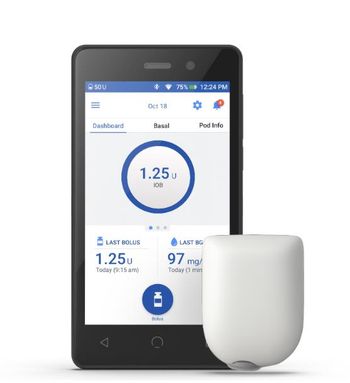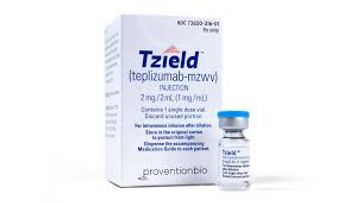
Positive Results for Using AI to Detect Type 1 Diabetes Early
Results presented at the 85th Scientific Sessions of the American Diabetes Association in Chicago highlight the potential for AI to detect disease before signs and symptoms occur.
Two studies presented at the American Diabetes Association (ADA) scientific sessions this past weekend highlight the potential of using artificial intelligence (AI) to detect Type 1 diabetes early.
The results of one of the studies show that AI could help identify individuals at risk for developing Type 1 diabetes up to a year before diagnosis with greater accuracy and fewer false positives than standard screening methods, according to
The retrospective cohort study developed age-specific machine learning models from NorstellaLinQ, a database that combines data from claims, lab tests, electronic healthcare records, and other sources. The model the researchers developed divided individuals into two age brackets: ages 0–24 and 25 and older. They used specific criteria to identify confirmed cases of stage 3 Type 1 diabetes, including patients with at least two medical claims for Type 1 diabetes, a higher frequency of Type 1 versus Type 2 diabetes claims, documented use of insulin or a continuous glucose monitor, and continuous medical and pharmacy claims activity in the two years leading up to diagnosis or treatment.
The models effectively identified the risk of Type 1 diabetes up to 12 months earlier than traditional screening methods, the news release said. The models demonstrated high sensitivity in correctly identifying people with Type 1 diabetes—approximately 80% in the younger group and 92% in the older. They also maintained improved precision compared to conventional screening methods, which typically yield a positive rate of just 0.3% in the general population.
“We’re energized by the results of this study and what it could mean for early type 1 diabetes risk detection, potentially enabling more efficient and targeted screening for a disease that often goes undetected until a serious event prompts medical evaluation,” Laura Wilson, Pharm.D., director health economics outcomes research, digital health at Sanofi, said in the news release. “By applying AI-driven predictive models to real-world data, we believe we can help identify individuals at high risk much earlier, giving them the opportunity to plan and prepare for the future.”
The researchers plan to launch a multiphase study to validate and refine a new clinical decision support tool for Type 1 diabetes. The research will integrate advanced AI models with hospital electronic health records, aiming to enable earlier, data-driven interventions for patients at risk.
In the second study, researchers used the Symphony Health Database, a large health care claims database covering 75 million patients, to train a machine learning model to identify people at risk for Type 1 diabetes before they show symptoms. Records from nearly 90,000 individuals with Type 1 diabetes to more than 2.5 million people without Type 1 diabetes were compared, using specific inclusion and exclusion criteria to define each group. Patterns in the records were analyzed to determine who was likely to develop Type 1 diabetes. The model was tested on a large, real-world population and evaluated using a range of performance measures to determine how accurately it could predict risk.
Results showed machine learning models could successfully identify people at risk for Type 1 diabetes before symptoms appeared, increasing detection efficiency more than 18-fold. Among those with Type 1 diabetes, almost a third (29%) had previously been misclassified as having Type 2 diabetes or other forms, highlighting a critical gap in diagnostic accuracy that can delay appropriate treatment and increase the risk of complications
Researchers found that the AI model that performed best was Bidirectional Encoder Representations from Transformers (BERT), a sophisticated tool originally designed for understanding language. BERT correctly identified 80% of true Type 1 diabetes cases and was more accurate than other models, with a stronger odds ratio (97.27 vs. 38.01), meaning its predictions were far more likely to be accurate, according to the ADA press release.
“By identifying individuals with presymptomatic Type 1 diabetes, we have the opportunity to shift the entire timeline of care,” Jared Joselyn, J.D., MBA, senior vice president and global head of E.D.G.E at Sanofi, said in the press release. “These findings show how AI can uncover hidden patterns in routine health care data and help improve detection rates, with the goal of fostering more proactive, scalable care before disease progression.
Researchers note follow-up studies are needed to validate the approach using additional healthcare datasets from across the U.S. and internationally, as well as to validate the predictions in a clinical setting. Future reseach will also explore enhancing model performance through multimodal AI techniques and by incorporating more longitudinal, genomic and real-world data into broader clinical workflows.
Interest in using AI to identify people with Type 1 diabetes before any symptoms develop is growing. A review of the research into using AI and machine learning to detect Type 1 early was published in the International Journal of Molecular Sciences in April 2025. Lead author Rahul Mittal, Ph.D., and his colleagues wrote that the ten studies included in their review show that AI and machine learning “hold transformative potential for clinical practice by enabling earlier diagnosis, guiding targeted interventions, and improving long-term patient outcomes.” But they also noted that data heterogeneity and “limited model generalizability” are obstacles that stand in the way of broader implementation of AI and machine learning.
Newsletter
Get the latest industry news, event updates, and more from Managed healthcare Executive.





















































